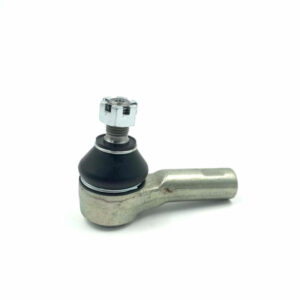Rod ends are available in various materials, and the selection depends on the specific application requirements.
Here are some common materials used for rod ends:
Steel: Steel is a widely used material for rod ends due to its strength, durability, and cost-effectiveness. Carbon steel is commonly used for standard applications, while alloy steels offer higher strength and better resistance to wear and fatigue. Steel rod ends are suitable for a wide range of industrial and automotive applications.
Stainless Steel: Stainless steel rod ends provide excellent corrosion resistance, making them suitable for applications where exposure to moisture, chemicals, or harsh environments is a concern. Stainless steel rod ends are commonly used in marine, food processing, pharmaceutical, and outdoor applications.
Bronze: Bronze rod ends feature a bronze inner bearing and an outer steel or stainless steel housing. This design provides self-lubricating properties, reducing the need for external lubrication. Bronze rod ends are often used in applications where low friction, high load capacity, and resistance to wear are important.
Aluminum: Aluminum rod ends offer lightweight properties, making them suitable for applications where weight reduction is critical, such as aerospace or racing applications. Aluminum rod ends are not as strong as steel or stainless steel, so they are typically used in lower load applications.
Thermoplastics: Certain thermoplastics, such as nylon or PTFE (Polytetrafluoroethylene), are used to manufacture rod ends. These materials offer low friction, self-lubricating properties, and resistance to corrosion and wear. Thermoplastic rod ends are commonly used in applications where noise reduction, vibration dampening, and smooth operation are required.
It’s important to consider the specific requirements of your application, including load capacity, operating conditions, environmental factors, and budget, when selecting the appropriate material for rod ends. Consult with suppliers, manufacturers, or industry experts to determine the most suitable material choice for your specific application.
What are the advantages of using stainless steel rod ends over steel rod ends?
Using stainless steel rod ends instead of steel rod ends offers several advantages:
Corrosion Resistance: Stainless steel is highly resistant to corrosion and oxidation compared to carbon steel. This makes stainless steel rod ends ideal for applications exposed to moisture, chemicals, saltwater, or other corrosive environments. They can withstand prolonged exposure without rusting or deteriorating, ensuring long-lasting performance and reliability.
Durability: Stainless steel rod ends are known for their excellent durability. They can withstand high loads, shock, and vibration without compromising their structural integrity. china rod ends suppliers This makes them suitable for demanding applications where strength and longevity are critical.
Low Maintenance: Stainless steel rod ends require minimal maintenance due to their inherent corrosion resistance. They do not require frequent lubrication or protective coatings to prevent rusting. This reduces maintenance time and costs associated with regular upkeep.
Hygienic Applications: Stainless steel rod ends are commonly used in industries such as food processing, pharmaceuticals, and medical equipment, where cleanliness and hygiene are essential. Stainless steel is non-porous, easy to clean, and resistant to bacteria and contaminants, making it suitable for applications with stringent sanitary requirements.
Aesthetic Appeal: Stainless steel has an attractive, polished appearance that can enhance the overall aesthetic appeal of an application. This is especially relevant in industries such as architecture, interior design, or automotive customization, where visual appeal is a factor.
Temperature Resistance: Stainless steel rod ends can withstand a wide range of temperatures, making them suitable for applications exposed to high or low temperature environments. They exhibit good thermal stability and maintain their mechanical properties across a broad temperature range.
While stainless steel rod ends offer these advantages, it’s important to consider the specific requirements of your application and weigh them against factors such as cost and load capacity. In some cases, steel rod ends may be sufficient and more cost-effective, especially in applications where corrosion resistance is not a primary concern.

